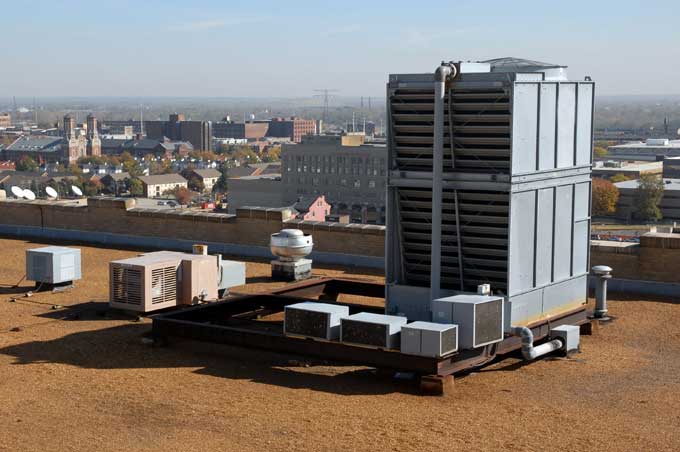
It might seem counterintuitive at first, but flat roofs are popular despite the tendency to collect water. Most historic and commercial buildings have flat roofs. Flat roofs are often meant for ease of access, as in commercial buildings, or are architecturally reflective of the local landscapes. Many residential roofs have broad areas of flat roofs as well. Flat roofs in particular are vulnerable to extreme heat and cold. In order to keep a flat roof from leaking and maintaining a working lifetime of 20 years requires expert installation in a specific order. The following general steps will help prevent the need for commercial roof repair altogether.
-
Framing the Roof
Flat roofs are not truly flat. Most flat roofs are actually built with a slight incline to prevent water from pooling. Flat roofs are usually built on an incline of 1/8 inch per foot. Usually, the slope channels water to a downspout.
-
Plywood Sheathing
Plywood is laid on top of the frame with a small gap. The gap allows for contraction and expansion during temperature swings and across temperature gradients.
-
Laying Down Underlayment
A critical component of a flat roofing system is underlayment. Iso board, unlike other roofing components that allow the roof to breathe (contract and expand), underlayment does not allow for movement and is laid tightly, with no gaps. Without underlayment, you will have to repair major commercial roofing components.
-
Dry-Fitting and Applying EPDM
After removing any potential hazardous debris, the EPDM (ethylene propylene diene monomer) layer is laid out to match the correct fitting. On large commercial installations, a 6-inch overlap between layers is often used. Any ventilation systems will be cut through the EPDM.
The EPDM is laid down on the existing iso board and adhered to using special roofing glue. The glue is very strong and leaves very little room for error when applying the EPDM. If the material is stretched, its elastic component will cause it to spring back to its original length, rippling the entire layer.
-
Finish Out the Edges
One of the hardest areas of a flat roof one that is most prone to leaks is near-vertical corners. Water has a tendency to pool near-vertical corners and the EPDM must extend up the vertical side. To keep the layer from falling down, termination stops are screwed into place. Termination stops are specialized metal brackets that are designed to hold roofing materials in place.
Flashing is also used to cover the roof edges. The use of copper flashing will help prevent algae and moss growth. The flashing used to cover a roof edge is normally called a drip edge. However, for flat roofs, the proper flashing that should be used is called gravel stop.
Schulte Roofing is a commercial roofing company in The Woodlands with over 100 years of combined roofing experience. Schulte Roofing offers The Woodlands area commercial property owners and management companies cost-effective repair and maintenance solutions that extend the life a building and building value in investment, simultaneously.
